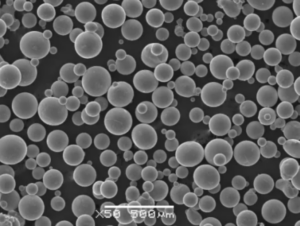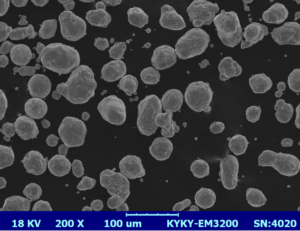공구강 분말 개요
공구강 분말 은 뛰어난 경도, 내마모성 및 인성이 필요한 공구 및 부품 제조에 특히 사용되는 다양한 산업 분야의 특수 재료입니다. 이 분말은 날카로운 절삭날을 유지하고, 변형에 저항하며, 고온을 견딜 수 있는 강철 종류인 공구강의 미세하게 분쇄된 형태입니다.
공구강 분말은 적층 제조(AM), 금속 사출 성형(MIM) 및 열간 등방 압착(HIP)과 같은 공정을 통해 고성능 공구 및 부품 생산에 필수적입니다. 공구강 분말의 다재다능함은 강철 고유의 특성을 유지하면서 복잡한 모양으로 성형할 수 있다는 데 있으며, 이는 자동차에서 항공우주에 이르기까지 다양한 산업에서 매우 귀중한 자원입니다.
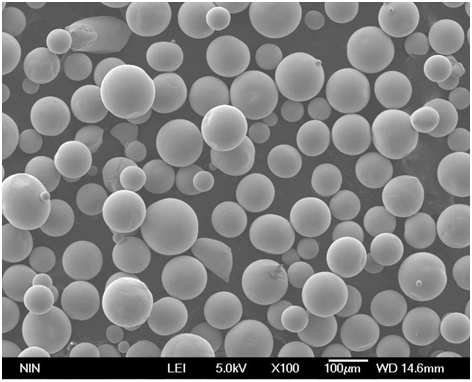
공구강 분말의 종류
공구강 분말의 다양성은 다양한 조성과 각 유형이 제공하는 특정 특성에서 비롯됩니다. 다음은 다양한 유형의 공구강 분말, 조성 및 고유한 특성을 분류하는 자세한 표입니다.
| 유형 | 구성 | 주요 속성 | 일반적인 용도 |
|---|---|---|---|
| M2 고속도강 | 텅스텐(6%), 몰리브덴(5%), 바나듐(2%), 탄소(0.85%) | 높은 경도, 뛰어난 내마모성, 고온 안정성 | 절삭 공구, 펀치, 다이 |
| D2 공구강 | 탄소(1.5%), 크롬(12%), 바나듐(1%), 몰리브덴(0.75%) | 높은 내마모성, 뛰어난 인성, 중간 경도 | 다이, 칼, 산업용 블레이드 |
| A2 공구강 | 탄소(1%), 크롬(5%), 몰리브덴(1%), 바나듐(0.25%) | 우수한 내마모성, 인성, 뛰어난 치수 안정성 | 펀치, 다이, 절삭 공구 |
| H13 공구강 | 크롬(5%), 몰리브덴(1.5%), 바나듐(1%), 실리콘(1%) | 높은 인성, 뛰어난 열적 안정성, 우수한 내마모성 | 압출 다이, 사출 금형, 열간 단조 공구 |
| O1 공구강 | 탄소(0.95%), 크롬(0.6%), 텅스텐(0.5%) | 높은 가공성, 우수한 내마모성, 유경화성 | 칼, 부싱, 게이지, 절삭 공구 |
| S7 내충격강 | 탄소(0.5%), 크롬(3.25%), 몰리브덴(1.4%), 실리콘(0.25%) | 높은 충격 저항성, 우수한 경도, 내충격성 | 끌, 망치, 중부하 다이 |
| P20 공구강 | 크롬(2%), 몰리브덴(0.5%), 니켈(1%) | 높은 연마성, 우수한 인성, 중간 내마모성 | 플라스틱 사출 금형, 다이캐스팅 다이 |
| T15 고속도강 | 텅스텐(12.5%), 코발트(5%), 바나듐(5%), 탄소(1.5%) | 매우 높은 경도, 뛰어난 내마모성 | 정밀 절삭 공구, 탭, 다이 |
| M42 고속도강 | 코발트(8%), 텅스텐(10%), 몰리브덴(1.5%), 바나듐(1.2%) | 높은 적열 경도, 뛰어난 절삭 능력, 우수한 내마모성 | 중부하 절삭 공구, 드릴, 밀링 커터 |
| H11 공구강 | 크롬(5%), 몰리브덴(1.25%), 바나듐(0.4%) | 높은 인성, 우수한 열충격 저항성, 중간 내마모성 | 열간 가공 공구, 압출 다이, 플라스틱 금형 |
공구강 분말의 특성
공구강 분말 은 일반적인 재료가 아닙니다. 고유한 특성으로 인해 고성능 응용 분야에 이상적입니다. 다음은 몇 가지 주요 특성에 대한 자세한 내용입니다.
- 경도: 공구강 분말은 소결 시 뛰어난 경도를 나타내므로 내마모성이 중요한 응용 분야에 적합합니다. 예를 들어, M2 및 T15와 같은 고속도강(HSS) 분말은 고온에서도 날카로운 절삭날을 유지할 수 있는 경도로 유명합니다.
- 인성: 경도에도 불구하고 S7 및 H13과 같은 공구강 분말은 인성이 있도록 설계되어 파손 없이 에너지를 흡수할 수 있습니다. 이러한 인성은 끌과 망치와 같이 상당한 충격을 받는 공구에 매우 중요합니다.
- 내마모성: D2 및 M42와 같은 공구강은 마모에 강하도록 제조되어 이러한 분말로 만들어진 공구의 수명을 연장합니다. 이러한 내마모성은 공구가 연마성 재료 또는 높은 응력 조건에 노출되는 응용 분야에서 특히 중요합니다.
- 열 안정성: H13 및 H11과 같은 공구강은 경도를 잃지 않고 고온을 견딜 수 있도록 설계되어 압출 및 다이캐스팅과 같은 공정에 사용되는 열간 가공 공구 및 금형에 이상적입니다.
- 기계 가공성: O1 및 P20과 같은 일부 공구강은 가공이 더 쉬워 모양을 만들고 더 쉽게 마감할 수 있으므로 생산 비용과 시간을 줄일 수 있습니다.
공구강 분말의 장점
제조에 공구강 분말을 사용하면 여러 가지 장점이 있으며, 이 섹션에서 살펴보겠습니다.
- 제조의 정밀성: 공구강 분말은 합금 원소의 조성과 분포를 정밀하게 제어하여 최종 제품 전체에 걸쳐 균일한 특성을 얻을 수 있습니다. 이러한 정밀성은 복잡한 형상을 일관된 품질로 생산할 수 있는 적층 제조에서 특히 유용합니다.
- 설계의 유연성: 기존의 잉곳 기반 방식과 달리 분말 야금은 재료 낭비를 최소화하면서 복잡한 모양과 크기를 만들 수 있습니다. 이러한 유연성은 맞춤형 공구 및 부품이 필요한 산업에 이상적입니다.
- 향상된 재료 활용: 공구강 분말을 사용하면 제조업체는 최종 원하는 모양에 매우 가까운 넷 셰이프 부품을 얻을 수 있으므로 광범위한 가공 및 재료 낭비가 필요하지 않습니다.
- 향상된 기계적 특성: 공구강 분말의 미세 입자 구조는 기존 방식으로 생산된 공구강에 비해 우수한 기계적 특성을 나타내는 경우가 많습니다. 이러한 향상은 까다로운 응용 분야에서 더 나은 성능으로 이어집니다.
- 지속 가능성: 적층 제조와 같은 분말 야금 공정은 기존 제조 방식에 비해 폐기물이 적고 에너지를 덜 사용하므로 공구강 분말이 더 지속 가능한 선택입니다.
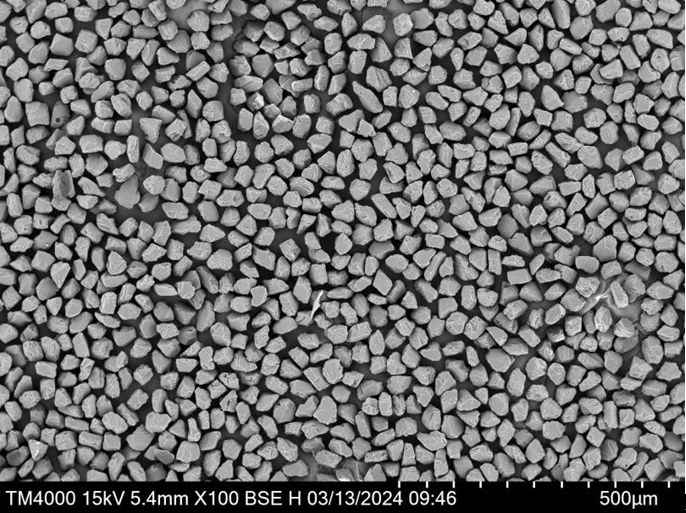


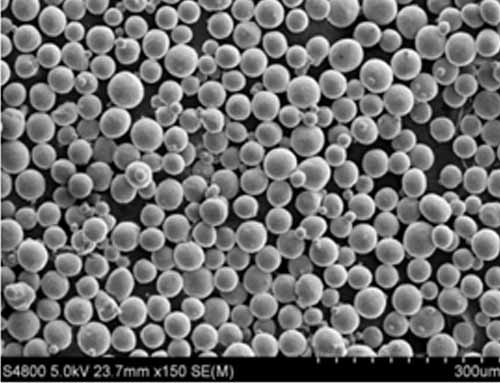

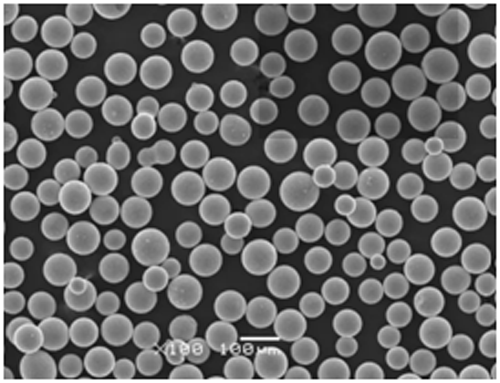
공구강 분말의 응용 분야
공구강 분말은 고유한 특성 덕분에 다양한 응용 분야에서 필수적입니다. 다음은 다양한 유형의 공구강 분말의 일반적인 응용 분야를 보여주는 자세한 표입니다.
| 애플리케이션 | 공구강 분말 유형 | 사용 이유 |
|---|---|---|
| 절단 도구 | M2, M42, T15 | 높은 경도, 내마모성, 내열성 |
| 사출 금형 | H13, P20 | 높은 인성, 열적 안정성, 우수한 가공성 |
| 압출 다이 | H13, H11 | 열충격 저항성, 인성 |
| 산업용 칼 및 블레이드 | D2, A2 | 내마모성, 엣지 유지력 |
| 끌 및 망치 | S7, A2 | 충격 저항성, 인성 |
| 플라스틱 사출 금형 | P20, H13 | 연마성, 인성 |
| 다이캐스팅 다이 | H13, H11 | 열적 안정성, 인성 |
| 고성능 드릴 및 탭 | M42, T15 | 적열 경도, 내마모성, 절삭 능력 |
| 펀치 및 다이 | A2, D2 | 인성, 내마모성, 치수 안정성 |
| 정밀 절삭 공구 | T15, M2 | 높은 경도, 내마모성 |
사양, 크기, 등급 및 표준
특정 응용 분야에 공구강 분말을 선택할 때는 사용을 규제하는 사양, 크기, 등급 및 표준을 고려하는 것이 중요합니다. 다음은 이러한 중요한 세부 정보를 간략하게 설명하는 표입니다.
| 유형 | 사용 가능한 성적 | 입자 크기 | 표준(예: ASTM, DIN) |
|---|---|---|---|
| M2 고속도강 | M2, PM M2 | -325 메쉬, -400 메쉬 | ASTM A600, DIN 1.3343 |
| D2 공구강 | D2, PM D2 | -325 메쉬, -400 메쉬 | ASTM A681, DIN 1.2379 |
| A2 공구강 | A2, PM A2 | -325 메쉬, -400 메쉬 | ASTM A681, DIN 1.2363 |
| H13 공구강 | H13, PM H13 | -325 메쉬, -400 메쉬 | ASTM A681, DIN 1.2344 |
| O1 공구강 | O1, PM O1 | -325 메쉬, -400 메쉬 | ASTM A681, DIN 1.2510 |
| S7 내충격강 | S7, PM S7 | -325 메쉬, -400 메쉬 | ASTM A681, DIN 1.2357 |
| P20 공구강 | P20, PM P20 | -325 메쉬, -400 메쉬 | ASTM A681, DIN 1.2311 |
| T15 고속도강 | T15, PM T15 | -325 메쉬, -400 메쉬 | ASTM A600, DIN 1.3247 |
| M42 고속도강 | M42, PM M42 | -325 메쉬, -400 메쉬 | ASTM A600, DIN 1.3247 |
| H11 공구강 | H11, PM H11 | -325 메쉬, -400 메쉬 | ASTM A681, DIN 1.2343 |
공급업체 및 가격 세부 정보
다음은 공구강 분말의 주요 공급업체를 가격 세부 정보와 함께 나열한 표입니다. 가격은 주문 수량, 위치 및 특정 요구 사항에 따라 다를 수 있습니다.
| 공급업체 | 위치 | 파우더 유형 | 예상 가격(kg당) |
|---|---|---|---|
| 합금 공구강 | 미국 | M2, D2, A2, H13 | $25 – $45 |
| Metal Powder Co. | 독일 | D2, O1, S7 | €20 – €40 |
| Powder Metals Inc. | 미국 | M42, T15, H11 | $30 – $60 |
| 정밀 분말 | UK | A2, P20, H13 | £22 – £48 |
| Techno Steel Ltd. | 일본 | M2, T15, D2 | 3000 – 6000엔 |
| Steel Supply Co. | 호주 | S7, H11, P20 | 30 – 55호주 달러 |
| Global Metals | 중국 | M42, H13, P20 | 150 – 300위안 |
| Advanced Tooling | 미국 | M2, D2, T15 | $28 – $50 |
| Ultimate Metals | 인도 | A2, D2, M42 | 2000 – 4000루피 |
| 야금학 프로 | 대한민국 | M2, S7, H13 | 25000 – 50000원 |
공구강 분말의 장단점
다음은 공구강 분말과 관련된 장단점에 대한 균형 잡힌 관점입니다.
| 장점 | 제한 사항 |
|---|---|
| 고성능 | 비용 |
| 공구강 분말은 경도, 인성 및 내마모성 측면에서 뛰어난 성능을 제공하여 까다로운 응용 분야에 이상적입니다. | 공구강 분말은 기존의 대량 재료보다 더 비쌀 수 있으며, 이는 예산 고려 사항에 영향을 미칠 수 있습니다. |
| 정밀성과 유연성 | 가공 복잡성 |
| 복잡한 형상과 크기를 고정밀도로 생산할 수 있어 재료 낭비를 줄이고 맞춤형 설계를 가능하게 합니다. | 공구강 분말의 제조 공정은 복잡할 수 있으며, 특수 장비와 전문 지식이 필요합니다. |
| 향상된 기계적 특성 | 제한된 가용성 |
| 미세한 입자 구조는 종종 기계적 특성을 향상시켜 전반적인 성능을 향상시킵니다. | 특정 유형의 공구강 분말은 가용성이 제한적이거나 리드 타임이 더 길 수 있습니다. |
| 재료 낭비 감소 | 환경적 고려 사항 |
| 넷 셰이프(Near-net-shape) 생산은 재료 낭비를 줄이고 환경 친화적입니다. | 금속 분말의 생산 및 폐기는 환경에 영향을 미칠 수 있으며, 이를 책임감 있게 관리해야 합니다. |
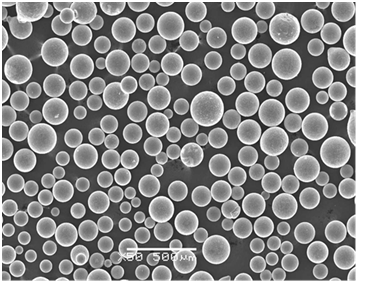
자주 묻는 질문
공구강 분말에 대한 몇 가지 일반적인 질문에 답변하는 유용한 FAQ 섹션입니다.
| 질문 | 답변 |
|---|---|
| 공구강 분말이란 무엇입니까? | 공구강 분말은 적층 제조 및 금속 사출 성형과 같은 다양한 제조 공정에 사용되는 공구강의 미세 분쇄 형태입니다. |
| 공구강 분말은 어떻게 생산됩니까? | 공구강을 미세 입자로 분쇄하여 생산하며, 이를 분말 야금 공정에 사용하여 고성능 부품을 만듭니다. |
| 공구강 분말을 사용하면 어떤 이점이 있습니까? | 이점으로는 고정밀도, 재료 낭비 감소, 향상된 기계적 특성, 복잡한 형상 생산 능력이 있습니다. |
| 공구강 분말의 일반적인 응용 분야는 무엇입니까? | 일반적인 응용 분야로는 절삭 공구, 금형, 다이 및 고성능 산업 부품이 있습니다. |
| 올바른 공구강 분말을 선택하려면 어떻게 해야 합니까? | 경도, 인성, 내마모성 및 열적 안정성을 포함하여 응용 분야의 특정 요구 사항을 고려하십시오. |
| 공구강 분말은 어디에서 구입할 수 있습니까? | 공구강 분말은 특수 금속 공급업체, 산업 유통업체 및 분말 야금 제품 제조업체에서 구입할 수 있습니다. |
결론
공구강 분말 은 현대 제조 공정에서 중요한 역할을 하는 다재다능하고 고성능의 재료입니다. 뛰어난 경도, 내마모성 및 설계 유연성과 같은 고유한 특성으로 인해 광범위한 산업 응용 분야에서 선호되는 선택입니다. 다양한 유형의 공구강 분말, 특성 및 응용 분야를 이해하면 특정 요구 사항에 맞는 올바른 재료를 선택하는 데 도움이 될 수 있습니다. 산업이 계속 발전하고 공구 및 부품에 대한 요구가 증가함에 따라 공구강 분말의 사용은 확장되어 제조 분야에서 새로운 가능성과 혁신을 제공할 것입니다.
공구강 분말에 대한 질문이 있거나 추가 정보가 필요한 경우, 추가 통찰력과 지원을 제공할 수 있는 공급업체 또는 업계 전문가에게 문의하십시오.
